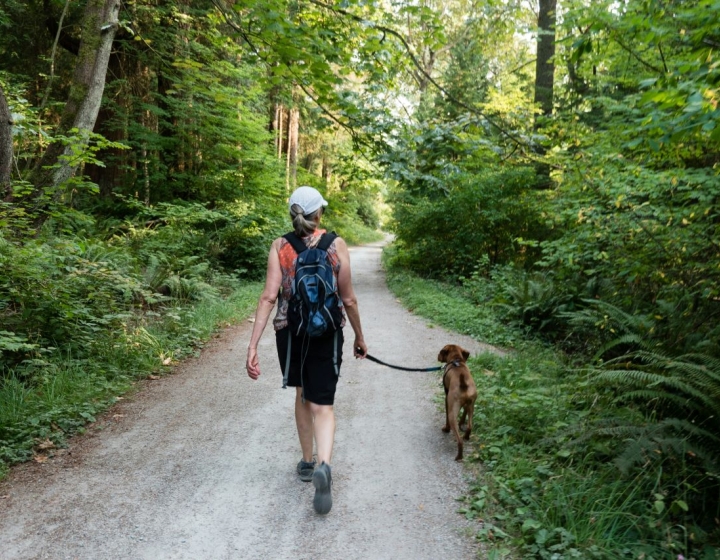New test predicts horse’s risk of contracting EHV-1 in an outbreak
Despite widespread vaccination, outbreaks of the potentially deadly equine herpesvirus 1 (EHV-1) occur sporadically across the United States, triggering apprehension and quarantines. Now, a new diagnostic test can tell owners whether their horse will be at risk in the event of an outbreak.
The test, developed by Dr. Bettina Wagner, chair of the Department of Population Medicine and Diagnostic Sciences at the Cornell University College of Veterinary Medicine, is called the EHV-1 Risk Evaluation Assay, and is available at the Animal Health Diagnostic Center. It measures the level of a key antibody that protects against the virus to let owners know a horse’s immediate risk. Wagner is using this and similar tests to understand how the horse immune system interacts with EHV-1 and to develop better vaccines against the virus.
“We can take a serum sample and define if this horse today is at high or low risk of EHV-1 infection,” said Wagner. “It also provides guidance on when the horse should next be vaccinated.”
Typically, EHV-1 causes a mild respiratory infection in horses. It circulates by close nose-to nose contact through droplets and through contaminated surfaces or clothes. Most horses are exposed to the virus before the age of two and carry a dormant form that can re-emerge during times of stress, making them perpetual carriers.
During an outbreak, however, about five to 10 percent of sick horses develop a neurological form of the disease called EHV-1 myeloencephalopathy. The virus travels via blood vessels into the spinal cord and causes strokes, which manifest as a lack of coordination, weakness in the hind limbs, lethargy and inability to maintain balance. About one-third of horses who develop the neurological form will die from the disease.
New York saw four outbreaks of EHV-1 this year alone. Besides treating affected horses, the course of action is to quarantine the facility and its horses for up to 28 days to stop further spread of the disease, which can paralyze horse movement, shows and sporting events.
Several licensed EHV-1 vaccines protect against the respiratory infection and prevent pregnant mares from experiencing abortions, but none exist that stop horses from developing the neurological form of the disease. Also, there are numerous cases where vaccinated horses still became sick during an outbreak.
“One important thing is to note that not every horse responds evenly to the vaccination,” said Wagner, who sees this phenomenon in her own horses, Peaches and Betty. While Peaches’ immune system reacts strongly to the vaccine, Betty has a much weaker response, and needs more frequent vaccination to maintain protection. “For some horses, the vaccination interval of a year may be fine. For others, six months may not be enough. The test is designed to find that out,” said Wagner. A horse will always react to the vaccine in the same way, so the testing only needs to be performed once, before and after vaccination, for veterinarians to optimize a horse’s vaccination schedule.
Wagner and her lab members developed this test as part of their long-term research project to understand how the equine immune system responds to EHV-1 infection and vaccination. She works with a herd of horses imported from Iceland that have never encountered EHV-1. They offer a unique opportunity to understand the complex interaction between a horse’s naïve immune system with the virus.
When Wagner started working with her Icelandic horses in 2012, the prevailing belief was that T cells – a type of white blood cell that targets the virus as it enters the bloodstream – would be the key to stopping the neurological form of the virus. But after monitoring how the horses respond both to vaccination and to exposure to the virus, Wagner realized that it wasn’t T cells, but a specific type of antibody, called IGg4/7, in the lining of the nose that can completely protect the horse.
“It turned out that if these IGg4/7 antibodies are in the nose of the horse at the time of infection, they immediately deal with the virus at the local infection site, and thereby prevent the virus from entering the lymphatic tissues and white blood cells, so that neurologic signs could not happen,” said Wagner. “We now can use those antibody values to predict if the horse can be infected or not with the EHV-1 Risk Evaluation Assay.”
Another related test currently under development in the Wagner lab may help New York manage EHV-1 outbreaks more effectively. The test detects biomarkers in the nose that indicate whether a horse exposed to the virus is protected and thus can be released early from quarantine. Thanks to a new grant from the Zweig Memorial Fund, she also plans to investigate whether those horses can pass the virus to susceptible horses, to ensure that they don’t pose a risk to the greater population.
Additionally, Wagner has been testing different variations of the EHV-1 vaccine to see if they stimulate a better immune response in adult horses that would protect against the neurological form. She is also working on vaccines for foals, whose immune systems are less mature compared to adult horses.
“We’re going to find a vaccine at some point that helps against neurologic disease in horses,” said Wagner. “But in the meantime, a test like this can help evaluate risk, especially for horses that travel a lot and are at risk of being infected.”
By Patricia Waldron





